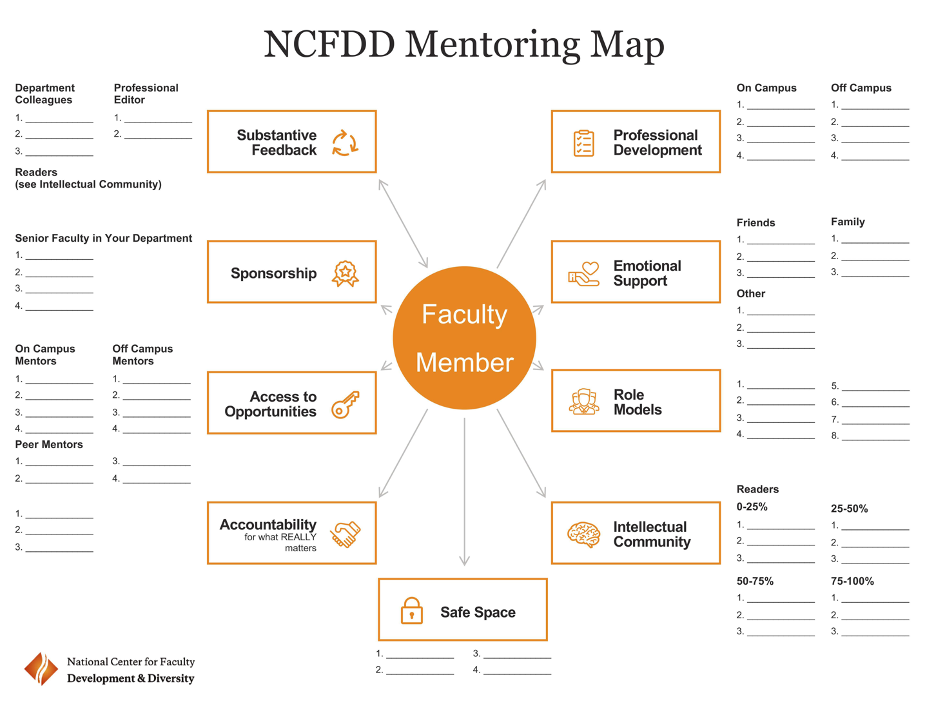The following are notes from the excellent webinar provided through NCFDD at https://www.facultydiversity.org/webinars/cultivatingyournetwork22
Stand in the Center of Your Own Mentoring Network
The mentee is at the center of their mentoring network. This network should be about the mentee, not about the mentor.
Cultivating a thriving mentoring network requires knowing what you need and asking for it!
- Identify your vision for your career.
- Assess your current network.
- Identify you current needs.
- Ask: How can I get my needs met?
- Plan to maximize your opportunities.
- Identify your limiting beliefs.
- Commit to action.
1. Identify your vision for your career
The mentee should ask questions such as the following: What is my vision for my future? Where do I want to be/what do I want to have accomplished in my career in 5, 10, and/or 20 years?
2. Assess your current network
Use the mentoring map to make your network visible. This allows you to see where your gap areas are.
3. Identify your current needs
Draw a circle around places where you don’t have names listed or where you feel you don’t have the number of people or the degree of support you need in that area.
4. How can you move towards getting your needs met?
For each area that you circled, brainstorm ideas for how you could get those needs met.
For example, if you want to bring your research to scale through federal funding and you don’t have anyone in your network who has received a federal grant as a PI, brainstorm ideas for who you might want to include in your network. You should include in your mentoring network individuals who have achieved what you are wanting to achieve.
5. Plan to maximize your opportunities
Think big. Identify three actions you can take to get your needs met. Who are three people you want to get on your mentor map, and what are three actions you can take to make that happen. This is brainstorming, not committing to action. Don’t eliminate people from consideration because you don’t think they will accept the invitation to be in your mentoring network.
6. Identify your limiting beliefs
Negative thoughts and judgments you have about yourself stand in your way of doing what is in your best interest. These limiting beliefs are most likely to reveal themselves when you are thinking about the actions you could take to accomplish something. Examples of common of negative self-talk that reveal limiting beliefs are:
- I don’t measure up.
- If I do that (whatever “that” might be), people will find out how incompetent I am.”
- I don’t fit in.
- My ideas/research/scholarship aren’t sophisticated enough.
- This isn’t ready for someone else to look at/review.
- Who am I to talk to that person whose work I admire.
The Harvard Business Review has published a helpful article titled “How to Overcome Self-Limiting Beliefs” by Jon Rhodes and Joanna Grover.
7. Commit to action
Think small. What are three things you can realistically do in the next 7-14 days to move things forward? These don’t have to be the things you identified when you were thinking big about maximizing your opportunities. They could just be the next steps toward accomplishing those goals.
